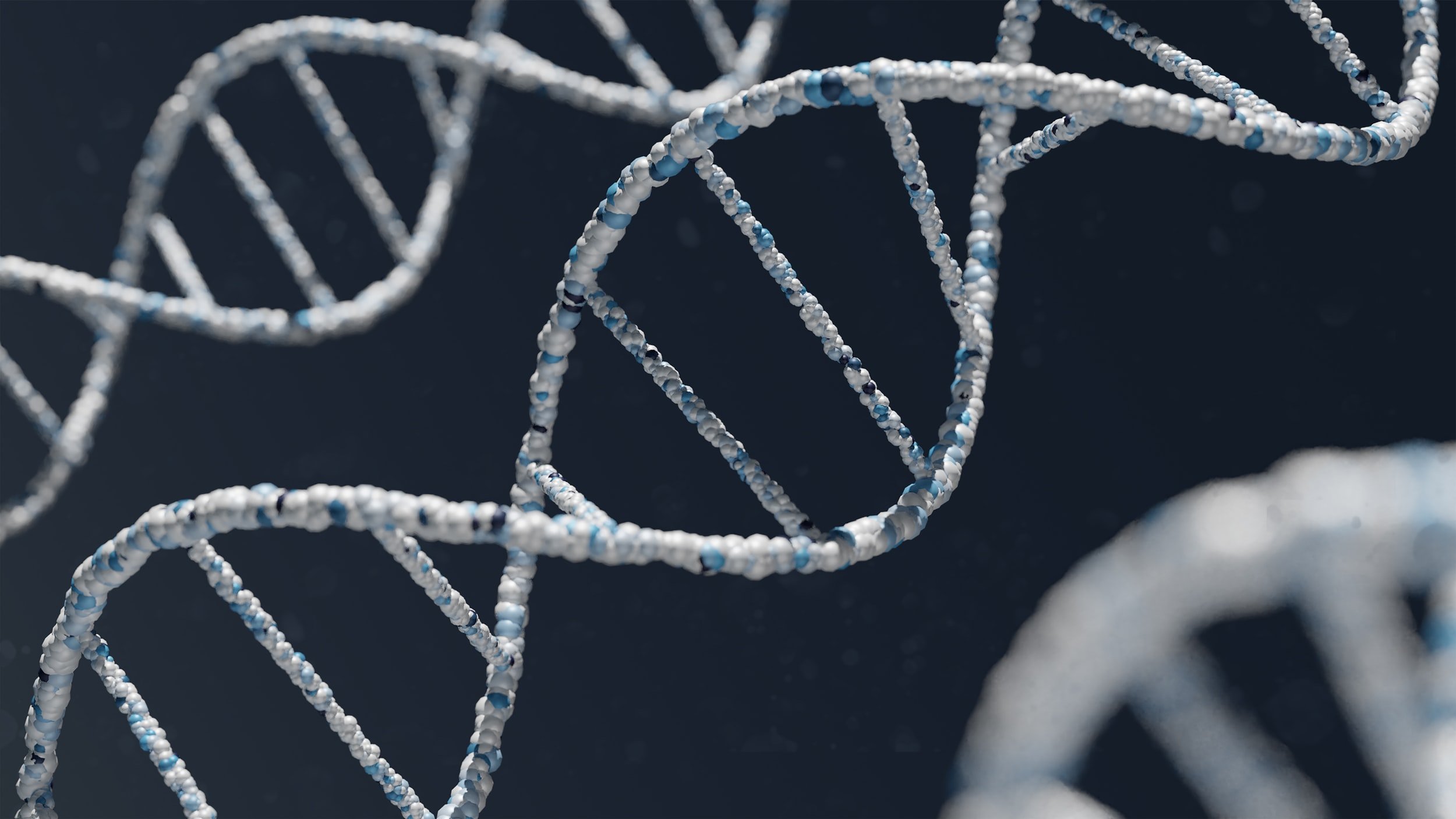What is CRISPR?
How was it first discovered?
What does this groundbreaking discovery teach us about the scientific process?
Check out the Gene Editing Institute to learn more about CRISPR: https://geneeditinginstitute.com/
In the early 1990s, off the coast of Spain, a little-known graduate student named Francisco Mojica was studying extremophile microbes. The specific group of extremophiles that he studied were able to survive in marshlands along the Mediterranean Sea, a habitat of high salinity. While examining a particularly salt tolerant microbe, Haloferax mediterranei, Mojica noticed an unusual sequence in its DNA. 30-base sequences were repeated over and over in a palindrome-like fashion. Interestingly, the repeating sequences always flanked other seemingly random DNA fragments of unknown origin. These unidentified sequence fragments were termed “spacers”. The origin of the spacers were quickly of considerable interest as they were unique to any type of genetic sequence that he or his lab were familiar with. Any mention of DNA sequences with these strange and unusual patterns were also rarely described elsewhere in scientific literature. This finding became the sole focus of Mojica’s scientific career for the next 10 years.
Mojica exhibited unrelenting determination following his initial discovery that allowed him to identify more of these unique DNA signatures in different archaea and bacteria. He characterized them as Short Regularly interspaced Repeats (SRSRs). He examined more than 20 prokaryotic DNA sequences and documented the same phenomenon of clusters of DNA with repeating sequence segments. Therein, the similarity of these DNA repeats in various organisms led him to the conclusion that the conservation across species of the segments themselves must have a functional role in the biology of the prokaryotes he studied.
Fast forward a few additional years, Mojica was finally able to confidently describe the function of his described SRSRs, thanks to the rapid development and availability of bioinformatics tools. He claimed the previously unidentified “spacers” between repeat sequences were perfect matches to the common viruses that typically infected archaea and bacteria. Why were snippets of virus DNA stored in the hosts’ DNA? Could this be memory from a previous infection? Francisco Mojica realized the viral DNA was evidence of a bacterial immune system to protect against further infection. This discovery by Mojica was published in the scientific Journal of Molecular Evolution in 2005 and the bacterial immune system later termed CRISPR (Clustered Regularly InterSpaced Palindromic Repeats) was born.
Francisco Juan Martínez Mojica is now a Senior Lecturer at the University of Alicante in Spain. He currently investigates CRISPR-Cas Systems for the use of bacteriophages as an alternative to antibiotics.
Source: https://imem.ua.es/en/about-us/francisco-juan-martinez-mojica.html
The heart of scientific research lies in the determination of hardworking researchers at the bench, of course, but this story is a fantastic example of building upon previous research. Also critical to scientific progress, is having experimental results repeated in others’ hands. Mojica’s suggestion of CRISPR as an adaptive immune system in bacteria was later confirmed by an industrial scientist, Rodolphe Barrangou of the Danisco Corporation. To test Mojica’s theory, Barrangou’s team challenged a bacteria with a bacteriophage invader. After the immune challenge and infection was resolved the bacteria they tested had indeed acquired the described “spacers” into its genome; these sequence segments were actually identical to those of the invader and provided future resistance against the virus.
Once Barrangou’s study was published, the scientific community started to understand how CRISPR was an evolutionary benefit in the bacterial genome. By integrating the invading phage’s genome, the cell has given itself an advantage in the event of future infections. To many people, this concept was not yet considered groundbreaking work. But in molecular biology labs across the world, scientists were designing experiments to test CRISPR in many other conditions.
Adaptive Immunity Process in Bacteria. If a bacterial cell is infected by a virus (1), the cell integrates the viral DNA into its genome (2). The bacteria then makes the CRISPR-Cas components (3), which form the gRNA-Cas complex (4). If the bacteria are reinfected by the same virus (5), the complexes cleave the viral DNA and reinfection is prevented (6). Adapted from CRISPR in a Box Educational Kit Instruction Manual, Rockland Immunochemicals, Inc. 2021.
Source: https://www.rockland.com/globalassets/documents/protocols/CRISPR-in-a-Box-Ed-Kits-Protocol.pdf
As the function of CRISPR gained attention, a groundbreaking discovery from the collaboration of Jennifer Doudna and Emmanuelle Charpentier was published in 2012 and may have single-handedly fueled a scientific revolution across the globe. Doudna’s lab at UC Berkeley and Charpentier’s lab at Umea University in Sweden, used CRISPR-directed genome editing to target and cut the DNA at exact locations of the genome. The mechanism for editing the genome is driven by a protein called Cas9 (commonly purified from Streptococcus pyogenes- the bacteria responsible for strep throat infections) that precisely locates the target sequence and cleaves the DNA. The two collaborating labs discovered that, in order to intentionally target the genome at a precise locale, you must also include a “guide” in the reaction. This is a short (20-base pairs) RNA sequence that matches the DNA sequence of interest. The Cas9 protein is like a scanner at the grocery store, and the guide RNA is the barcode, together, locating and cleaving DNA at the target site. The implications of this discovery, being able to manipulate and direct CRISPR to the exact specificity of a desired location on the genome, were monumental for biologists and geneticists alike. Within the next 3 years, labs across the world had started replicating and improving the process with their own studies on CRISPR and the powerful Cas9 protein.
Jennifer Doudna and Emmanuelle Charpentier Win the Nobel Prize in Chemistry for Developing CRISPR Technology. Presented in 2020, this is the first Nobel Prize awarded to two women not in conjunction with a male collaborator.
Simultaneously, at Harvard, Feng Zhang and his collaborator, George Church, achieved successful editing of the genome of mammalian and human cells using the newfound CRISPR/Cas9 technology! They spent some time optimizing the system and introduced human-inherited diseases to mice to create animal models for research of human diseases. By 2013, CRISPR gained significant attention in the scientific community and even mainstream media. Science Magazine* had just named CRISPR as the runner-up for top scientific breakthrough of the year. Then, in 2015, CRISPR had officially received its own honor of 2015’s Breakthrough of The Year**. CRISPR was quickly adapted into practice in the gene-editing world due to the strength and determination of many scientists, often young and early in their careers, supported by years of unglamourous and labor-intensive research. Thus, scientists began paving the way for the CRISPR revolution. These genetic scissors, in the right hands, can be adapted to tackle issues in many human diseases.
This isn’t a story of sudden findings, accidental discovery, or even the product of a single research proposal. This story shows the relentless perseverance of many scientists across the globe, working together at international conferences and using the published literature to solve a puzzle together. It shows that everyone has something to bring to the table if you ask questions, thoughtfully design experiments, and replicate another’s results. This meticulous process is what drives science forward. Although the sudden media attention will have you believe that CRISPR was an instant success, in reality its discovery was decades of work in the making. Today, scientists are still trying to optimize the amount and type of Cas proteins for the CRISPR reaction, which cells are the best to use in vitro, and what human diseases are viable targets for this new avenue of research.
Scientific labs that are the first to identify and describe a new scientific breakthrough don’t always achieve immediate notoriety. Many benchtop experiments are never accepted for publication in peer-reviewed journals, especially experiments that fail to progress or have little real-world implications. However, it can be argued that no hypothesis or idea is too little or too undervalued to be examined. Scientific curiosity is what drove Mojica’s initial discovery forward. Despite little public attention on the genomes of prokaryotes in the 1990s, science continued to advance through the peer-review process and experimental replication to confirm tested hypotheses.
An important takeaway for anyone with an interest in science is that the skills and knowledge that each discipline in the STEM community contributes is always magnified by collaboration, determination, and the willingness to explore. Communicating across fields and building upon previous knowledge can lead to exciting new possibilities to enhance scientific innovation.
Other Resources
Check out the Gene Editing Institute to learn more about CRISPR research and educational programming: https://geneeditinginstitute.com/
Interested in CRISPR’s history? Check out: https://www.broadinstitute.org/
How is CRISPR advancing medicine? Here is a review of the status of many clinical trials using CRISPR as a treatment mechanism: https://innovativegenomics.org/news/crispr-clinical-trials-2021/
References:
Barrangou R, Fremaux C, Deveau H, Richards M, Boyaval P, Moineau S, Romero DA, Horvath P. CRISPR provides acquired resistance against viruses in prokaryotes. Science. 2007 Mar 23;315(5819):1709-12. doi: 10.1126/science.1138140. PMID: 17379808.
Cong, Le, F. Ann Ran, David Cox, Shuailiang Lin, Robert Barretto, Naomi Habib, Patrick D. Hsu, Xuebing Wu, Wenyan Jiang, Luciano A. Marraffini, and Feng Zhang. "Multiplex Genome Engineering Using CRISPR/Cas Systems" Science 339:6121 (2013), pp. 819-823.
Jinek M, Chylinski K, Fonfara I, Hauer M, Doudna JA, Charpentier E. A programmable dual-RNA-guided DNA endonuclease in adaptive bacterial immunity. Science. 2012;337(6096):816-821. doi:10.1126/science.1225829
Kevin Davies and Martin Jínek.The CRISPR Journal.Apr 2020.68-72. http://doi.org/10.1089/crispr.2020.29091.mji
Mali P, Yang L, Esvelt KM, Aach J, Guell M, DiCarlo JE, Norville JE, Church GM. RNA-guided human genome engineering via Cas9. Science. 2013 Feb 15;339(6121):823-6. doi: 10.1126/science.1232033. Epub 2013 Jan 3. PMID: 23287722; PMCID: PMC3712628.
Mojica FJ, Díez-Villaseñor C, Soria E, Juez G. Biological significance of a family of regularly spaced repeats in the genomes of Archaea, Bacteria and mitochondria. Mol Microbiol. 2000;36(1):244-246. doi:10.1046/j.1365-2958.2000.01838.x




























